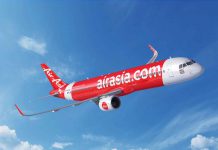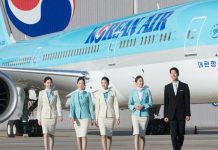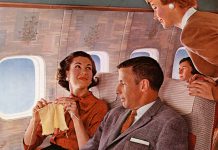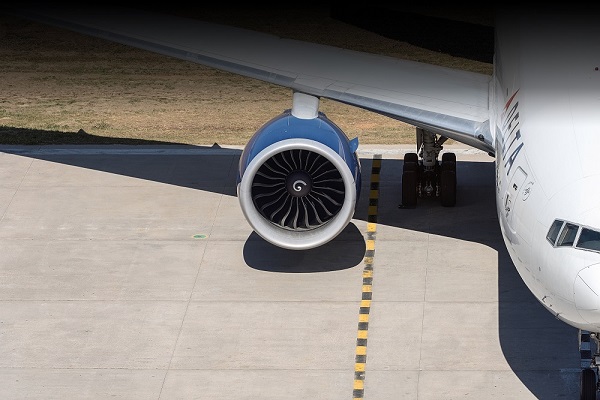Like a lot of folks this flyer tends to get stuck in time, remembering the way it was in terms of airfares.
Some of my fondest memories are of paying about $US250 for a roundtrip, jumping on an AirTran Boeing 717-200 in Atlanta and scooting up to Reagan Washington National to see our daughter.
Zoom, zoom – no pain in the pocket.
Nowadays, that airfare runs US$328, one way on Southwest, AirTran’s merger successor.
Last time I made the trip, instead of a 1-hour, 37 minute flight, I had to battle the traffic for a dozen hours up Interstates 85 and 95, wistfully looking up every time I spotted a jet contrail etching the sky above.
“It’s expensive to fly,” asserts Mike Boyd, president of aviation consultancy Boyd Group International. “As a mode of transportation, air [travel] is changing.” So be it, but though some are making the leap from skyways to highways, it’s no mass exodus. As with many things, it’s more complex than that.
By the Numbers
On the face of it, airfares aren’t what they used to be but put the numbers in context and the perspective changes.
That context is the U.S. Consumer Price Index.
John Heimlich, vice president and chief economist of the industry trade group Airlines for America (A4A) says that from 1979 (the year U.S. airline deregulation took effect) to 2016 U.S. inflation rose 231 percent. Over that time frame ticket prices—including fees—rose 97 percent. In other words, it took 37 years to almost double.
But the average price of foods and services purchased by Americans over that time more than tripled.
“Consumers experienced a 41 percent decline in the real price of domestic airfare,” he contends. “There’s a long-term decline in the cost of air travel, which was part of the intent of deregulation.”
A4A calculates that back in 1978 the average cost (excluding taxes) of a calendar year 1978 roundtrip domestic ticket ran just over $US600. The average price of roundtrip passage, adjusted for inflation, in 2016 was $US366.92—inclusive of ancillary fees.
The lobby group says U.S. airlines enplaned (boarded) just under 300 million passengers in pre-deregulatory 1978. By 2016 the number had skyrocketed to 800 million.
However, it should be noted, says AirlineRatings editor-in-chief Geoffrey Thomas, “that airfares in relation to weekly average earnings have always been declining and passenger numbers growing, thanks to dramatic aircraft and industry efficiency gains and computerization”.
“In fact, since de-regulation the pace of the decline in fares and the growth of passenger numbers in the US actually slowed,” says Thomas.
“The other intent of de-regulation was to have many airlines serving many markets and through mergers and bankruptcies over the past 39 years that is not the case today with giant mega carriers dominating key hubs.”
Read: Big US airlines advised to limit capacity growth
Helping fuel the flights of airline travelers, according to A4A, is the average airfare as a percentage of disposable income. In 1978, it was just under 2.5 percent. By 2016, the figure was just under 1 percent.
The U.S. Department of Transportation’s Bureau of Transportation Statistics (BTS) paints a precise picture of domestic passenger traffic with its latest look at how many folks fly. U.S. airlines carried an all-time high number of passengers during the first six months of 2017—414.4-million systemwide, 360.9 million domestic and 53.5-million international.
Seats and Such

To wring as much revenue as they can from every seat, the carriers have increased load factors (the percentage of seats filled by paying passengers) dramatically.
In 2003, with the cloud of the September 11 terrorist attacks hanging over the industry, load factors averaged 71.8 per cent.
BTS says by 2008 they hit 78.8 percent and, by 2017, 84.1 percent of those ever-more-tightly spaced seats were filled with paying passengers.
Distance Dominates
As the distance between seats has shrunk, so too the number of airports airlines serve.
This means travellers need to say “so long” to economic short-haul flying — most airline insiders agree it’s history.
“Thirty years ago there were 30,000 people flying between Albany, [New York] and Boston,” says Boyd.
Today, there are simply no [turbine-powered] aircraft “that can carry people in a market like that…at a price people will pay,” he says. Cape Air is the sole provider, and they fly twin-engine piston-powered aircraft.
Short flights are getting short shrift, and so are smaller airports.
According to Department of Transportation figures, in 2003 a total of 481 airports in America had scheduled air service.
In 2012 there were such 461 airports – a 4.15 percent fall off.
MasFlight says the average distance flown from those ballooned from 676 miles in 2003 to 788 in 2012.
That’s important.
Not only does it indicate airlines are lofting longer flights, it reflects the fact that a slew of smaller cities are losing service to nearby markets.
Instead, they’re being connected to the world via farther-afield hubs and spokes, airports to which they must drive comparatively long distances to access an airport or final destination itself.
The Magic Bus
Two-hundred and fifty miles appears to be the magic distance.
Outside that circle, people fly; inside it they make for the highway. Take Chicago to Indianapolis, a 164-mile trip. For O&D [non-connecting origin and destination] passengers, it’s almost entirely transitioned now to inter-city bus service.
Are we entering an era where short-haul, inter-city busses are about to reign über alles? We’re seeing that in the Northeast. We’re seeing that in the Midwest, the Pacific Northwest and California.
Busses are really doing an extraordinary job of capturing that price-sensitive end of the market that values cost more than time.
Bus company Megabus is merely part of a megatrend. United will fly you nonstop in 1 hr, 7 min. between Indianapolis and Chicago O’Hare.

Booked three days out, it will cost you $US170, one-way. Megabus takes longer—3 hrs, 30 min. and charges $US39.
Over on the East Coast, a ticket on Delta from Reagan Washington National can be had for $US462 purchased three days ahead of travel.
Megabus takes you from Washington’s Union Station to the corner of 7th Avenue and 27th Street for $13 one-way. The trip is long: 4 hrs 15 minutes. But the price is a pittance: U.S.$13.
How about driving? Brave Interstate Highway 95, one of the most overused roads in America and in 3 hrs. and 49 min. you should behold the spires of Manhattan. If you’re not stuck in traffic.
The third option to flying (confined largely to the East and West Coasts) is the train. In the BOSWASH, that string of cities connecting Washington, Philadelphia, New York and Boston there’s Acela, America’s answer to high-speed rail. The cost of a one-way business class seat from Washington’s Union Station is $289, and the fast train takes 2 hrs and 25 min to make the run.
Out on the West Coast non-high-speed rail works nicely on the short San Diego – Los Angeles Union Station run, a 2-hour, 45-minute sojourn on Amtrak’s Pacific Surfliner at a cost of $US37 one-way, based on a two-week advance purchase.
If you’re going to fly, United Express’ lowest one-way, two-week advance purchase is $230. The trip from San Diego International (Lindbergh Field) up the coast to LAX takes 53 minutes.
Fees, Fi, Fo Fum?
No matter how much you may hate them, absent ancillary airline fees – add-ons for everything from checking bags to a better place in line – the cost, not to mention the very existence, of an airplane seat would be iffy indeed.
A la carte ancillary fees have “proven to be…the difference between profit and loss for the majority of the world’s airlines,” contends Jay Sorensen, president of the consulting firm IdeaWorksCompany.
A4A contends the price of an air ticket is still a bargain.
Sorensen agrees, but with a critical caveat: “Where the airline industry has made a mistake time and time again, is they unbundled something – take something away and start charging for it – and they don’t improve it.”
Baggage fees proliferate, with the notable exception of Southwest’s hugely-popular, product-differentiating ‘Bags Fly Free’ approach.
Sorensen argues airlines that do charge bag fees would do well to plow some of that money into improving baggage service.
He cites Alaska Airlines as a carrier where management got the point. Alaska was late to the party in charging bag-check fees and when they finally made the move, Sorensen says, “they took the occasion to make a guarantee: ‘If we don’t deliver [your] bag within 25 minutes [you] get 2,500 frequent flyer miles, or $25.’.”

So well did it work that Alaska reduced guaranteed delivery times to 20 minutes.
Sorensen concedes he’s “not been successful [in] selling anyone on this concept,” nor has he been able pinpoint other instances in which carriers use fees to ‘refresh’ specific unbundled products.
If airlines did, and they promoted the heck out of the fact, might it boost the esteem in which the American public holds them?
“No,” Sorenson shoots back. A former airline employee himself, he believes the industry “is a lightening rod for consumer hatred… unjustifiably so”.
Even if it does a whole lot of things right [it will be a target of dissatisfaction],” he adds.
But the point is it will still be around.
After decades of turmoil extending from the onset of airline deregulation back in 1979 – like it or loathe it – the United States airline industry has settled into a period of homoeostasis, where – according to The Free Dictionary – an “an organism or cell…maintain[s] internal equilibrium by adjusting its physiological processes.”
We have profitable airlines now. They’re not making disproportionate profit margins when you compare them to other industries but the American airline industry is healthier than it’s been in years.
Nor have ticket prices soared over the long-term.
People are abandoning airways for the highways – but only selectively, on short-haul routes.
New airplanes are on the way, even if they won’t stop at your hometown anymore.
Fares, although not as friendly as they once were, aren’t fearsome either.
In short, airlines are adapting – right along with the passengers they transport.
























